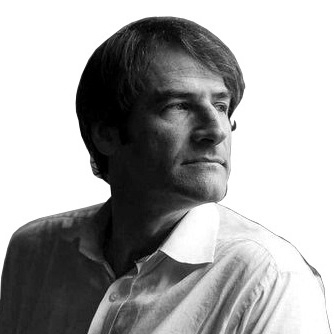Over five first-rate essay collections and one very good, if underrated, novel, Meghan Daum has written a cohesive, almost novelistic narrative about a character named Meghan Daum. Her first book, My Misspent Youth, from 2001 (which, full disclosure, I published at Open City Books), measured the author’s dream of a Persian throw on a hardwood floor against the cost of a single martini in a New York City bar.
The up-and-coming urbanite exiles herself, in the name of fiscal sanity, to a farm “in a square state” (her novel, The Quality of Life Report, 2004, in which the Daum-like protagonist is named Lucinda Trout). She becomes a respectably married and employed columnist at the Los Angeles Times whose main peccadillo is an obsession with real estate (Life Would Be Perfect if I Lived in That House, 2010).
Daum is probably best known for her essay “Matricide,” about her complicated relationship with her mother and, in particular, about her mother’s death, which appeared in her 2014 collection, The Unspeakable, winner of the PEN America award for nonfiction. Next comes a divorce, the acquisition of a huge dog, a vortex of loneliness, and a strange sort of intimacy with the talking heads of YouTube representing what is now called the “Heterodox Community” (The Problem with Everything, 2019).
Her new book is called The Catastrophe Hour. I first learned of the title in her bio for a New York Times piece she wrote in the weeks after her house burned down in the Los Angeles fires. It described her newly found condition of being without a home, and all the stuff in it. My first thought upon seeing the title was: Had she been able to gather her stunned effusions and reflections about the fire, which I had been following on her podcast and Substack, and written a book in three weeks?
No. The Catastrophe Hour is a collection of recent essays, completed and titled before the fires began. I would forget about the eerie coincidence for long stretches of reading. Then I’d come across a line such as “I want to throw out 90 percent of my possessions” and remember that at some point after writing these words, she lost 99.9 percent of them.
Or: “The thought of leaving the detritus of my life to sift through fills me with more terror than the thought of death itself.”
Or: “The only thing that would cool the housing market in LA is a catastrophe. An earthquake, a terrorist attack, or fires that rolled down from the canyons en masse and engulfed the city streets.”
The life under scrutiny is her own, but Daum is always situating her private predicaments in proximity to the wider world and the Zeitgeist’s preoccupations: real estate, money, vanity, and all the ways that the personal is ever more ensnared in the technological. The surface of her work suggests its animating theme is how to live in the world, but the subtext is always how to live with oneself.
I had always viewed Daum as a kind of heir to Mary McCarthy, a fellow Vassar grad, as it happens. There is a similar astringent, almost bitchy cackle to her prose. On moving back to her New York City apartment, Daum writes, “It was a building where so many people lived alone that it was not infrequent that someone would drop dead in his or her apartment, only to be found days later after the neighbors noticed the smell.” A neighbor assures her, or attempts to: “That won’t happen to you. If you dropped dead your dog would bark.”
Reading The Catastrophe Hour, though, it’s impossible to avoid thoughts of Joan Didion, especially given their shared topographies of Los Angeles and New York (and the way they both see the former as home even while they live for long periods in the latter). “People fear divorce the way they fear illness,” Daum writes in the opening essay, “The Broken World.” “They tell themselves that given enough healthy life choices it’s possible to lower their odds into, if not negligibility, at least something that will, if it should ever come to that, feel more like a force majeure than the real statistical possibility everyone knows it is.” The world of the divorced, she writes, is one “in which the stiff hide of convention and expectation has softened into supple leather.”
The book’s final piece, “The End of the Personal,” reflects on our world of “content” and the discontents of its creators. As if to reflect on the degraded reputation of the personal essay, or maybe just its ubiquity, she writes this one in the third person. “The writer began to suspect that building a career around personal essays was like sitting at the bar alone at night…. If an older woman is drinking alone at a bar people turn their heads as if granting privacy to a man urinating in a bush.”
The writer “no longer goes to the movies. She consumes content.” She also produces content: a podcast, a Substack, the “Unspeakeasy” meetups she hosts in different cities. “It’s a good thing my parents aren’t alive to witness all this,” Daum writes. Recalling that her mother felt that trick-or-treating past the age of age six is a form of begging, she writes, “When you think about it, the new digital creative economy is more or less a nonstop version of trick-or-treating.”
The Catastrophe Hour is about a state of mind, a stage of life, and our current moment, such as it is. It’s also about a working writer dealing with evolving technology and its (and therefore our) pathologies. The book is so engrossing, especially toward the end, that only when I encountered a line about how she wants to go to the closet and throw out all her clothes older than three years, “as if I can slow down time by resetting the wardrobe clock,” do the events that come after the end of the book assert themselves. When she writes a book about that, I will eagerly read it.
There is an aspect of Daum’s aspirations to austerity and simultaneous compulsion to acquire that echoes the binge-purge dynamics of eating disorders. I find her handling of these themes, and candor about them, fascinating. Maybe this is because I am someone who can’t throw anything out. As she writes, “People are drawn to those who embody the complications they can’t untangle in themselves.”
Thomas Beller is the author of several books, including J.D. Salinger: The Escape Artist and Lost in the Game: A Book About Basketball


